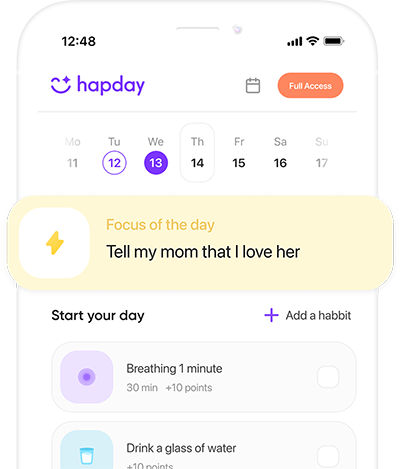Table of Contents
- Understanding ADHD and Its Impact on Productivity
- Time Management Techniques
- Creating an ADHD-Friendly Environment
- Exercise and Nutrition
- Mindfulness and Relaxation Techniques
- Seeking Professional Help
- Conclusion
Understanding ADHD and Its Impact on Productivity
Ever felt like your brain’s been set to “shuffle” when you just want it to be on “repeat”? That’s kind of what it’s like for someone with ADHD. Concentrating and finishing tasks—it’s a colossal undertaking. This scenario often spirals into a vicious cycle of fatigue, where mental drain magnifies the symptoms and makes concentrating even tougher. Oh, and on top of that, the productivity issues just pile on more stress and anxiety. A real recipe for disaster… or is it a cyclical cacophony? According to the Journal of Attention Disorders, adults dealing with ADHD clocks in more noticeable stress levels at work and well, sadly, lag behind their peers without the disorder in terms of job performance. Acknowledging these hurdles? Step one to finding what clicks for you.
Time Management Techniques
And here’s a nugget worth noting—effective time management can be a lifesaver for productivity woes intertwined with ADHD. Methods like the Pomodoro Technique (I know, cooking and time management shouldn’t mix, right?) which breaks tasks into manageable chunks with regular pauses, are often golden. Why? Because working in short sprints can be more sustainable for ADHD brains. Another nifty trick up the sleeve—time blocking. Dedicate specific times in your day to specific tasks. The structure it brings helps curb that urge to juggle umpteen tasks, which usually trips up productivity.
Implementing the Eisenhower Box
Ah, the Eisenhower Box—no relation to the president except that he inspired it, apparently. It’s a deceptively simple decision-making tool crafted for prioritizing tasks by urgency and importance. By categorizing what’s on your plate, overwhelming feelings can take a backseat, leaving room for a focus boost. The Journal of Organizational Behavior shares the backing that prioritizing tasks enhances work performance, who’da thunk it?
Creating an ADHD-Friendly Environment
Okay, let’s chat about the role of environment—because it’s huge. Especially for our ADHD folks. Distractions need to be kept to a bare minimum. You achieve this by carving out a workspace that’s clutter-free and void of unnecessary interruptions. Noise-canceling headphones? White noise machines? They aren’t just fancy gadgets; they’re tools for keeping focus on a straight path.
Use of Technology
Now, technology… it’s a double-edged sword, isn’t it? Distracting, yes, but also potentially mighty helpful. Picking the right apps—like task managers (think Todoist, Trello) or those that accentuate focus (say Forest, Focus@Will)—can make a world of difference. These can track tasks, ping reminders at just the right time, and even offer up focus-boosting background whispers. As it turns out, the Journal of Medical Internet Research found that digital interventions can notably bolster adults with ADHD in their journey toward self-regulation and task mastery.
Exercise and Nutrition
Here’s the thing—physical health and brain power? They’re practically BFFs. Regular exercise doesn’t just keep you fit but also sharpens concentration and tones down ADHD symptoms. According to the American Journal of Psychiatry, it turns out exercise boosts dopamine and norepinephrine—those nifty neurotransmitters tied to attention. When it comes to nutrition, you won’t go wrong with omega-3 fatty acids, lean meats, and those carbohydrate buddies in complex form. They’re your energy’s best friends. Keeping off the sugar rollercoaster helps sustain consistent focus throughout the day.
Mindfulness and Relaxation Techniques
Mindfulness, folks—give it some love. Practices like meditation and yoga serve stress reduction, and surely, stress is a sneaky partner to fatigue. As noted in the Journal of Attention Disorders, embracing mindfulness-based interventions can do wonders for attention and reducing impulsivity among ADHD folks.
Deep Breathing and Grounding Techniques
Trust me on this—simple exercises such as deep breathing and grounding techniques? They do wonders. Popping them into your routine might be your ticket to managing stress and keeping your focus train on track, making task tackling a more serene affair.
Seeking Professional Help
While all those self-help strategies pack a punch, having a healthcare pro in your corner is key when it comes to expertly managing ADHD. Therapy—Cognitive Behavioral Therapy (CBT) specifically—is known to lessen ADHD symptoms and crank up productivity levels. And depending on individual needs, medication might be part of the answer too.
The Role of ADHD Coaching
ADHD coaching, it’s a specialized ballgame. Coaches partner with clients in this arena to tailor strategies on managing time, setting achievable goals, and jacking up productivity. Research gives it a thumbs-up for significantly enhancing organization, time mastery, and productivity.
Conclusion
Moving from fatigue to focus as someone living with ADHD demands a blend of strategies, from honing time management skills and shaping an enabling environment to valuing physical wellness and seeking professional guidance. By embracing these science-backed ADHD productivity solutions, Gen Z and Millennial women can level up their focus and chase their dreams.
In essence, navigating the ADHD landscape and its impact on productivity requires a well-rounded strategy—one that involves time management, environment curation, physical well-being, and professional engagement. Embracing these pathways can shepherd individuals from fatigue into full-blown focus, lighting up both productivity and life quality. For a more personalized exploration into productivity and mental wellness, you might want to check out Hapday.

